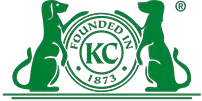English Presa Bulldog History
The English Presa or English Bulldog is a breed of domestic bull terrier that originated in England. The breed was historically used in bull and bear baiting, but is now primarily a companion and guard dog. The roots of this venerable old bulldog type go back some 2,000 years. It is perhaps first mentioned in writing in 1561, although there is evidence of similar dogs in the Roman period. The Old English Bulldog, as it is known today, was greatly prized for its strength and courage. They were great hunters of vermin, and also trained for man-killing. They were also used for bull and bear baiting. The Kennel Club recognized the breed in 1865, and the English Bulldog became the most popular of the many varieties of bulldog in England. In 1936 a breeder of English Bulldogs named Frank Baker began to develop a less wrinkled type of bulldog, by crossing the smooth-coated Olde English Bulldog with the rough-coated American Pit Bull Terrier. The “New Breed” of bulldog that resulted was smaller, more elegant, and friendlier than the Olde English type, and it became quite popular in Britain and the United States. In 1975, the “Olde Type” of bulldog was recognized by the AKC as the “English Bull Terrier”. However, the “new” or “modern” variety was renamed the “American Bully”.
English Presa Bulldog Physical Characteristics
The English Presa Bulldog is a small, short-coated, muscular, compact and stocky breed of dog that is typically 15 to 18 inches in height at the withers (highest point of the shoulders) and 40 to 60 kilograms in weight. They have a thick, full head of hair with bangs and curled forward over the eyes. They have wide, strong jaws with powerful teeth. Their nose is dark in color with a straight profile. They have almond-shaped, dark brown eyes. Their ears are cropped (shortened) and stand erect. They have a short, thick neck, broad shoulders and a compact, muscular build. Their legs are thick and well muscled, their paws are large, round and flat. They have a thick, double-coat that is either fawn, brindle, or red in color.
Eye Colors
Blue, Brown
Nose Colors
Black
Coat Colors
Brindle, Brown, Fawn, Red, Pied, White
Height Range
Male Height Range: 19 – 21 inches
Female Height Range: 18 – 20 inches
Weight Range
Male Weight Range: 110 – 140 lbs
Female Weight Range: 80 – 95 lbs
English Presa Bulldog Health
Description of breed health.
Lifespan
8-11 yrs
English Presa Bulldog Health Concerns
Hip And Elbow Dysplasia, Bloat, Osteochondritis Dissecans, Patellar Luxation, Hypothyroidism, Skin Diseases
English Presa Bulldog Temperament and Behaviour
The English Presa Bulldog is a loyal, brave, and protective dog that is sweet and gentle. They can be playful and boisterous at times, but they can also be calm, relaxed and lazy. They get along well with other canines and animals and are very devoted with their owners.
English Presa Bulldog Activity Requirements
The English Presa Bull Dog is a small, muscular dog that is strong, tough, and brave. They were originally bred as working dogs, but today they are popular companions. While they don’t need high levels of activity, they do require regular exercise. A good jog or a long walk can help your English Presa Bull Dog stay healthy and fit. If you live in an apartment or don’t have a lot of space, an English Presa Bull Dog may not be the right choice for you. They are best suited to homes with yards where they can run or play.
Miles Per Day
6 miles
Activity Per Day
40 minutes
Daily Food
3 cups
Kennel Club Recognition

American Kennel Club
Not Recognized
English Presa Bulldog is part of the Unclassified group.
Visit the American Kennel Club website.

The Kennel Club
Not Recognized
English Presa Bulldog is part of the Unclassified group.
Visit the Kennel Club website.

Australian National Kennel Council
Not Recognized
English Presa Bulldog is part of the Unclassified group.
Visit the Australian National Kennel Council website.

Canadian Kennel Club
Not Recognized
English Presa Bulldog is part of the Unclassified group.
Visit the Canadian Kennel Club website.
